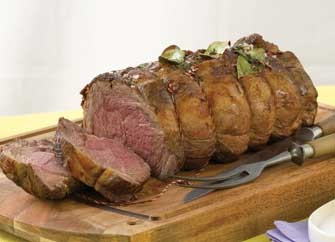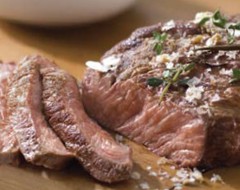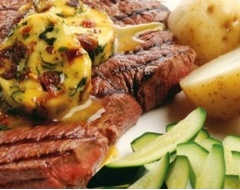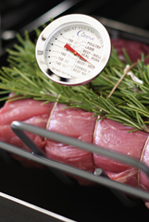
A top meat thermometer, we recommend it.
Is it ready yet? Not sure? Here’s how to tell when meat is ready or “done”.
There are many variables involved when cooking meat and determining its degree of doneness. Variables like the size, shape and thickness of the meat. Plus the temperature of the meat before it was cooked, the accuracy of the oven, the shape and type of roasting dish, barbecue or pan, and more.
Don’t be daunted though, following these simple steps should set you straight. These tips can used together or independently to help you judge if the meat you’re cooking is ready to serve. Let’s start with roasting and steaks are below.
Use these recommendations for roasting
Use these recommendations as a guide at the start of the cooking time:
BEEF |
Temp |
Rare |
Medium |
Well Done |
| Rib eye/scotch fillet, rump, sirloin, fillet, topside, standing rib roast |
200 ºC |
15 -20 min per 500g |
20 -25 min per 500g |
25 -30 min per 500g |
| Silverside, blade, round |
160 ºC |
20 -25 min per 500g |
25 -30 min per 500g |
30 -35 min per 500g |
LAMB |
Temp |
Rare |
Medium |
Well Done |
| Eye of loin/backstrap, lamb round or topside roasts, lamb rump |
220 ºC |
15 -20 mins |
20 -25 min per 500g |
25 -30 min per 500g |
| Rack of lamb, crown roast |
200 ºC |
20 -25 min total regardless of weight |
30 – 35 min total regardless of weight |
40 -45 min total regardless of weight |
| Loin (boned and rolled), Leg or shoulder (bone in)Easy carve leg or shoulder |
180 ºC |
20 -25 min per 500g |
25 -30 min per 500g |
30 -35 min per 500g |
VEAL |
Temp |
Rare |
Medium |
Well Done |
| Fillet, leg, loin/eye of loin, rump and shoulder |
200 ºC |
15 -20 min per 500g |
20 -25 min per 500g |
25 -30 min per 500g |
Try using a meat thermometer
It is the easiest and most accurate way to determine the degree of doneness. The degree of doneness for both large and small cuts of meat is always measured at the very centre of the cut, because this is where the moisture gathers.
Refer to the temperature and indicator on the face of the thermometer.
The ‘touch test’ method for both Steaks and Roasts
Towards the end of the estimated cooking time test the meats readiness by judging with the ‘touch test’ method:
Press the outside centre of the meat lightly with tongs. If it feels soft and springy it’s in the medium-rare range. If it feels slightly firm and springy it’s medium. Any firmer to touch and its on its way to well done.
The ‘touch test’ technique
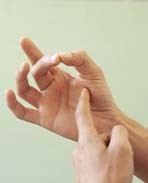
The ‘Touch Test’
- Make a circle with your index finger and thumb and apply a little pressure to the centre of the ball on the palm side of your thumb, it will feel very soft. With either your fingertip or the back of your tongs, press the centre of the steak. If it has the same soft texture, it is rare.
- Move your thumb to the middle finger and press the ball of your thumb again; steaks with the same soft feel will be medium rare.
- The ring finger and thumb together will indicate a medium doneness.
- The little finger and thumb together will be very firm; if a steak feels the same it will be well done.
This method of judging doneness is particularly useful when grilling, barbecuing or pan-frying meat likes steaks and cutlets.
All meat should rest before serving
If given the time to rest the meat will loose less juice when you cut it and when you eat it the meat will be juicier and tastier. The time taken to rest will depend on its size, a roast is best rested for 10 to 20 minutes before craving. Steaks or chops should stand for at least 2 to 3 minutes before serving.
Don’t forget about ‘residual heat.’ It is important to note that while the meat rests, the residual heat continues to raise the internal core temperature of the meat. It’s a good practice to check the temperature and take the roast or steaks from the oven or barbecue just shy of the degree of doneness goal (about 3ºC to 6ºC short of the goal temperature). The resting time then allows the roast or steak to complete itself and the juices to set.


